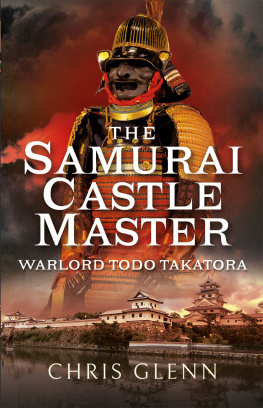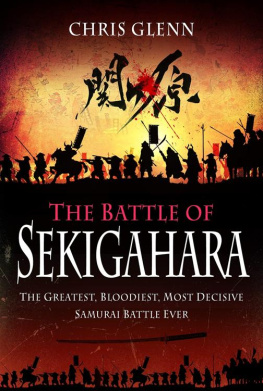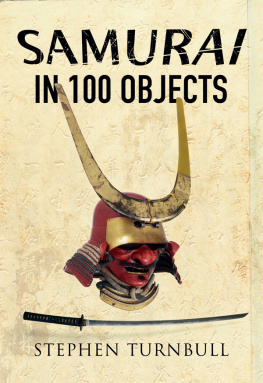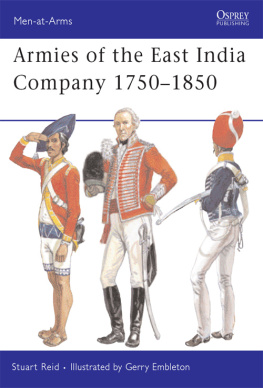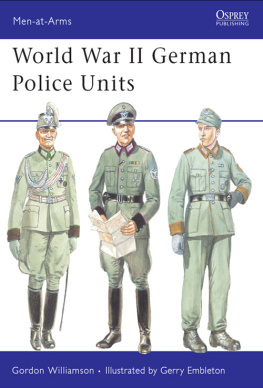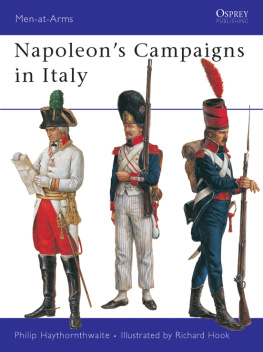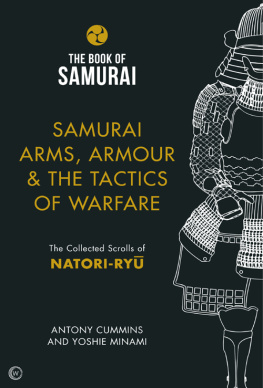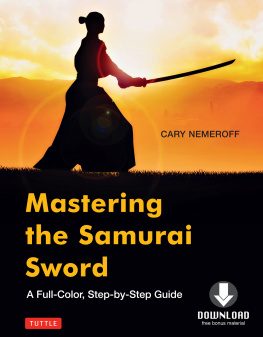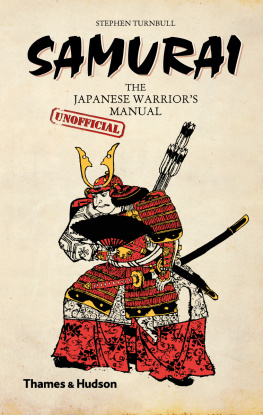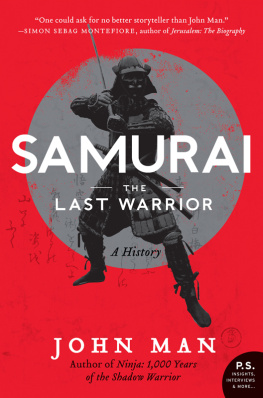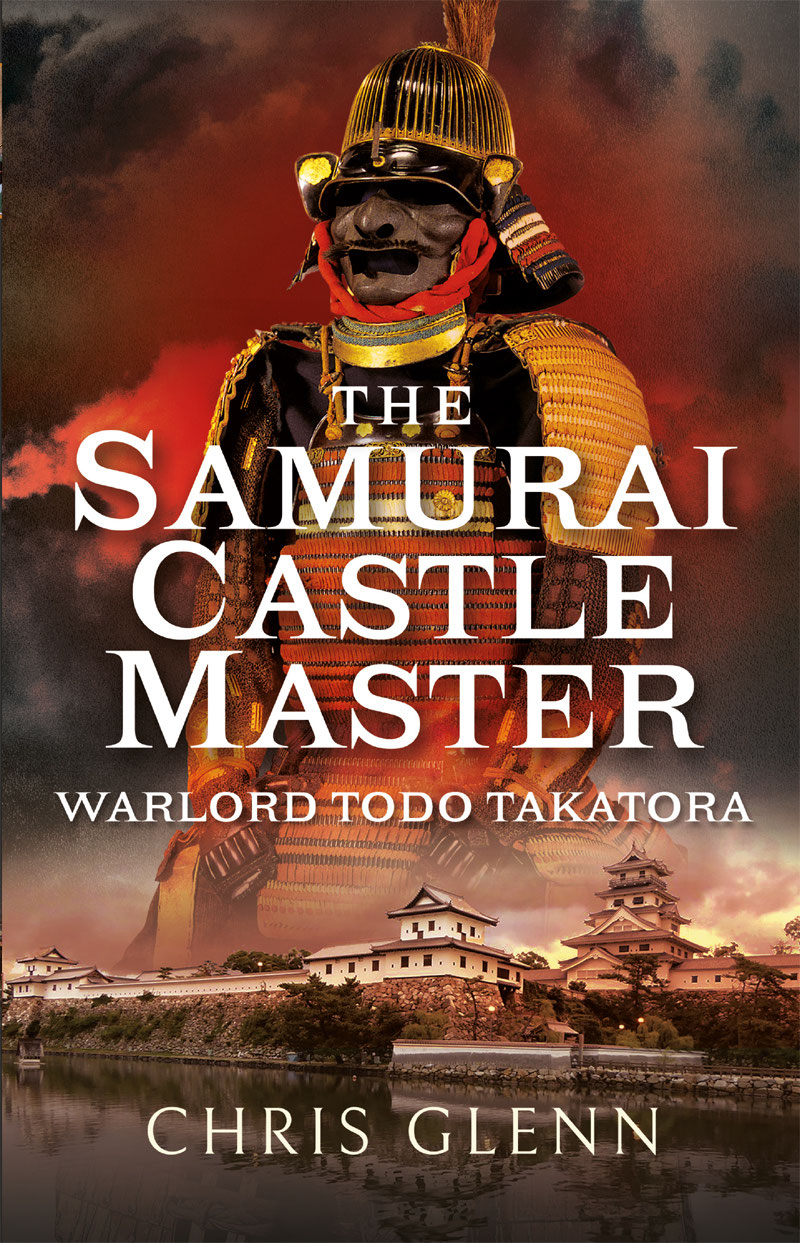The Samurai Castle Master
The Samurai Castle Master
Warlord Todo Takatora
Chris Glenn
First published in Great Britain in 2022 by
Frontline Books
An imprint of
Pen & Sword Books Ltd
Yorkshire Philadelphia
Copyright Chris Glenn 2022
ISBN 978 1 39909 658 4
Epub ISBN 978 1 39909 659 1
Mobi ISBN 978 1 39909 659 1
The right of Chris Glenn to be identified as Author of this work has been asserted by him in accordance with the Copyright, Designs and Patents Act 1988.
A CIP catalogue record for this book is available from the British Library.
All rights reserved. No part of this book may be reproduced or transmitted in any form or by any means, electronic or mechanical including photocopying, recording or by any information storage and retrieval system, without permission from the Publisher in writing.
Pen & Sword Books Limited incorporates the imprints of Atlas, Archaeology, Aviation, Discovery, Family History, Fiction, History, Maritime, Military, Military Classics, Politics, Select, Transport, True Crime, Air World, Frontline Publishing, Leo Cooper, Remember When, Seaforth Publishing, The Praetorian Press, Wharncliffe Local History, Wharncliffe Transport, Wharncliffe True Crime and White Owl.
For a complete list of Pen & Sword titles please contact
PEN & SWORD BOOKS LIMITED
47 Church Street, Barnsley, South Yorkshire, S70 2AS, England
E-mail: enquiries@pen-and-sword.co.uk
Website: www.pen-and-sword.co.uk
Or
PEN AND SWORD BOOKS
1950 Lawrence Rd, Havertown, PA 19083, USA
E-mail: Uspen-and-sword@casematepublishers.com
Website: www.penandswordbooks.com
Dedication
To my First Hero, John Glenn.
Contents
Acknowledgments
Iam indebted to Kato Yuka for helping to source materials, checking details and following me countless times to castles, battle sites and Takatora-related locations.
To Professor Miura Masayuki, Japans foremost expert on samurai castles and a man most generous with his limited time and unlimited knowledge. Medieval castle specialist, Professor Nakai Hitoshi of Shiga University, and Professor Fujita Tatsuo of Mie University for their answering of endless questions.
Many thanks also Mr Kasai Kenji of Iga Ueno City, the curators of Iga Ueno Castle, and the Osaka Castle Museum. Kouras Mayor Nose Kikuo, the caretaker of Takatoras grave, Miyabe Ryoyu of Kansho-in Temple, Tokyo and the priests of Nanzen-ji Temple, Kyoto. Many thanks also to the countless people in city hall offices and education department researchers and specialists in Ichinomiya, Imabari, Kami-cho, Kinokawa, Kyoto, Osaka, Shizuoka, Tamba Sasayama, Tokyo, Tottori, Toyooka, Tsu, Uwajima, Matsusaka, Yabu, Yamato Koriyama, Yamazaki, and others across Japan who took my repeated calls and answered my questions. Thanks to Omi Tourism Boards Kojima San and Naiki San, and to the Frontline team.
List of Plates
Introduction
In a time when the average Japanese man stood between 150cm to 165cm tall, Todo Takatora, at 190cm, was a giant among men. By comparison, of the three eventual unifiers of Japan, Oda Nobunaga stood 169cm, Toyotomi Hideyoshi was 154cm, and Tokugawa Ieyasu was just 157cm tall.
It wasnt just his large size that made him stand out, but his many abilities and achievements. Todo Takatora was without a doubt one of the most intelligent of men of the Warring States period. As a warrior, he took part in many of the major battles of his day, often in the front ranks, being wounded time and again, yet showing extraordinary bravery each and every time. Together with Kato Kiyomasa and Kuroda Kanbe, Todo Takatora is regarded as the premier samurai castle planner and architect. He greatly influenced castle design and construction with his many innovative ideas and plans, designing, building or at least assisting and advising on the construction of over thirty of the finest castles across Japan and even Korea. Takatora made castles with such fine defensive reputations that no one wanted to attack them. Aside from his remarkable architectural innovations, Takatoras political acumen, negotiating skills and ideas changed Japanese politics during the highly volatile late sixteenth and early seventeenth centuries, with lasting effects throughout the feudal period.
History has been unkind to Todo Takatora. He has, until now, never properly received the attention, the praise or respect afforded countless lesser men of his time. As we shall discover, his contribution to Japanese warfare, architecture, politics, history and culture is immense. Indeed, it is difficult to name another more influential historical character.
One of the reasons for this lack of respect and attention is that his reputation was sullied in the early Edo period for his having been instrumental in a number of at the time highly controversial policies and practices. Takatora was deemed unreliable by many daimyo and scholars, particularly in the later Edo period and Meiji period when unflinching loyalty to a single lord was seen as a virtue, as he had changed masters a record seven times to serve ten men, and as will be fully explained, was a tozama daimyo, an outsider, who had worked his way into a position of trust within the inner sanctum of the Shogunate. Not once did he ever misuse his position or influence. This sincere, austere man, earnest and diligent in his dealings, worked to serve his masters, for the good of the nation.
Takatora was originally closely allied with the Toyotomi clan, former rulers of the nation, and yet he became not only one of the most trusted men in the Tokugawa Shogunate, but one of the closest personal friends of Tokugawa Ieyasu, and an equally trusted personal instructor and advisor to the second and third Shoguns, Tokugawa Hidetada and Tokugawa Iemitsu. His skills in battle equalled those in negotiation, tactical planning, leadership and, importantly, castle construction. Skills that made him invaluable to the rulers of the nation, and in turn the cause of envy amongst other ruling daimyo and the elite hatamoto samurai. His advice played a major role in shaping the policies of the Tokugawa government, and the history and culture of Japan.
A giant among men, Todo Takatora lived a life that unfolds like a drama. This is his story.
Pre-Glossary
Please note, Japanese names are given in the traditional order, family name first, then personal name. In the case of the samurai, names changed often, and so only the better-known names of each individual warrior are used.
Dates are often confusing, as Japan used an Imperial period name and a lunar calendar system. Where possible, modern Gregorian calendar dates are provided.
In an effort to educate and improve understanding and appreciation of Japanese castles, Japanese terminology has been used throughout this book. Although there is a full and detailed glossary of terms in the back section, here are some words and terms that will appear frequently throughout. To assist readers in understanding and becoming familiar with the terms, please read this Pre-glossary.

